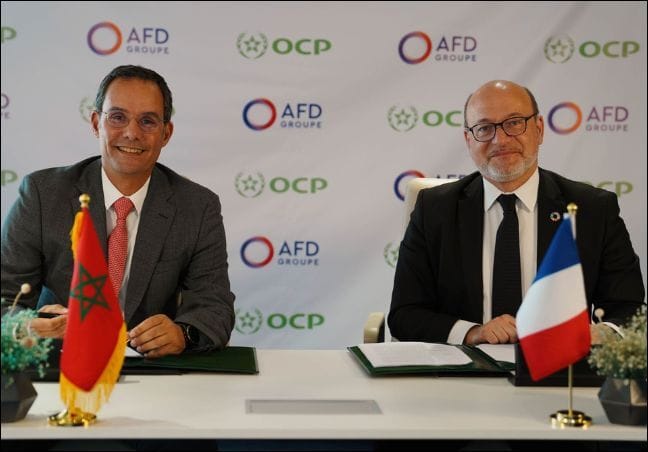- Hydrogen Rising
- Posts
- New funding model could reshape Africa’s hydrogen financing
New funding model could reshape Africa’s hydrogen financing

From the newsletter
In a landmark move for green finance in Africa, Morocco’s fertiliser producer OCP Group has secured $377 million from the French Development Agency (AFD) through a performance-based funding model linked to milestones in production capacity, green hydrogen and green ammonia development, and achieving water autonomy.
AFD’s conditional funding model introduces measurable KPIs for hydrogen, signaling a shift in how green hydrogen projects across Africa may be evaluated and financed.
The deal highlights growing donor preference for impact-linked financing, potentially reshaping Africa’s hydrogen investment landscape with new expectations around climate, water and biodiversity indicators.
More details
AFD will disburse funds based on OCP meeting performance indicators, including increased clean energy and non-conventional water capacity, development of green hydrogen and green ammonia production, and incorporation of climate and biodiversity metrics into risk management.
The funds support OCP’s $13 billion green investment program targeting 100% clean energy use and non-conventional water sources by 2027. It also aims to expand decarbonized fertilizer production by integrating green ammonia, progressively reducing OCP’s carbon footprint and achieving full carbon neutrality across its value chain by 2040.
The deal represents a new frontier in how Africa’s green hydrogen and climate-aligned industrial projects are funded. The $377 million loan is not just a large capital injection, it signals that funders are raising the bar for accountability and measurable outcomes across hydrogen-linked investments.
Unlike traditional loans that release capital upfront or based on general timelines, AFD’s performance-based funding model ties disbursements to clear sustainability benchmarks, an approach that is part of a wider trend. As green hydrogen begins to move from pilot to scale across Africa, funding agencies, development finance institutions (DFIs), and climate-aligned investors are demanding transparency, impact tracking, and ESG-aligned project design.
AFD’s model reflects how future public-private green hydrogen deals may increasingly require robust monitoring frameworks. For Africa, this model presents both opportunity and challenge. On one hand, it can catalyze better-designed projects that deliver real climate value and attract high-integrity finance. On the other, it may create barriers for emerging hydrogen players who lack the technical capacity to design and track KPIs across scopes 1, 2, and 3 emissions, or to account for biodiversity and social impact with precision.
However, Morocco is uniquely positioned to lead this shift. OCP’s integrated strategy, spanning phosphate mining, fertilizer production, desalination, and clean energy, offers the scale and operational control to implement such conditional frameworks. Its ambitions to achieve full carbon neutrality by 2040 and 100% clean energy and water autonomy by 2027 are not just corporate targets, they form part of a national narrative positioning Morocco as a regional leader in sustainable industrial transformation.
For other African countries developing hydrogen hubs, such as South Africa, Namibia, Egypt, and Mauritania, the implications are clear. Projects that prioritize transparency, define measurable environmental and social outcomes, and align with national or continental decarbonization strategies will be more attractive to institutional investors and donors moving forward.
Our take
In a global climate finance landscape rife with greenwashing concerns, Africa has a unique opportunity to position its hydrogen investments as high-integrity, impact-driven alternatives. The OCP deal marks a significant step forward in this direction.
However, scaling this performance-based funding model continent-wide will require stronger policy frameworks, enhanced technical support for project developers, and harmonised impact standards across African borders.
Africa’s hydrogen sector must be prepared not only to build infrastructure but also to deliver verifiable, long-term environmental and social outcomes aligned with sustainability goals.